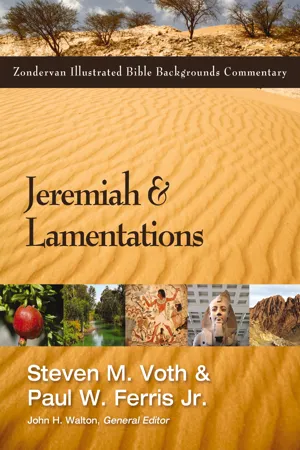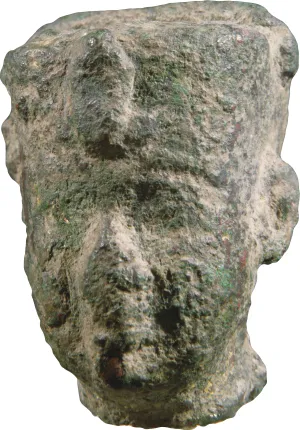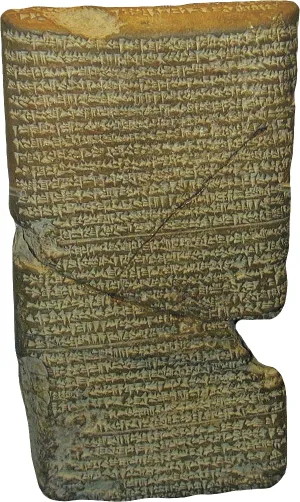Historical Setting
The final days of Judah constitute the historical setting that sets the stage for Jeremiah’s prophetic ministry. Jeremiah was born into a world of violent changes and intense power struggles. Two significant events frame the stage on which Jeremiah will act as God’s mouthpiece. The first one is the process by which the center of ancient Near Eastern power shifts from Assyria to Babylonia. This shift allows Judah a certain degree of freedom, albeit short-lived, to carry out important religious and political reforms. The second event, the fall of Jerusalem, produces a profound and irreversible scar in the life and identity of ancient Israel. The political, economic, social, and religious realities of the period in between these two hallmark events are the ones that surround the core of Jeremiah’s prophetic activity.
The demise of the Assyrian empire was a defining moment for the life of Judah at the end of the seventh century B.C. It created a kind of power vacuum that enabled Judah to assert a degree of independence. In addition, Manasseh’s extra long reign in Judah, longer than any other king of the Davidic line, including David himself, finally came to an end in 642 B.C. He had been a vassal of the Assyrian empire and is evaluated negatively by the prophets and historians of the Bible for his influence in favor of pagan religious practices.
Manasseh was succeeded by his son Amon, who ruled only two years. It was King Josiah (641–609 B.C.) who was able to take advantage of this international state of affairs. Assyria was on the decline and Babylon had not yet asserted its power in the region. Thus, Josiah was able to recover political power for Judah as well as institute important religious reforms. For almost three decades Judah enjoyed a time of progress and hope. During this time, however, Babylonia started filling the vacuum left by Assyria. In 626/625 B.C., Nabopolassar defeated the Assyrian army, and he founded a new dynasty in Babylon that has become known as the Neo-Babylonian empire. This new empire lasted until 539 B.C., when Babylon surrendered to the power of the Persians.
During the reign of Nabopolassar (626–605 B.C.), the situation in Judah remains relatively stable. Josiah leads a religious reform movement, no doubt prompted by the finding of the Book of the Law in an abandoned corner of the temple, or perhaps the scroll was part of the foundation deposit that was typically searched out during the temple restoration process.1 This is the approximate time when we can suppose that Jeremiah begins his preaching. Beginning in 612 B.C., matters begin to change rapidly in the overall international situation. These in turn have a direct effect on Judah’s situation.
Nineveh, the capital city of Assyria, is defeated by a coalition of Babylonians and Medes in 612 B.C. For Assyria this means the beginning of a rapid decline toward oblivion. Only two years later, the Babylonians inflict another deadly blow on the Assyrians by taking control of Haran (610 B.C.). At this point, something critical takes place with respect to Judah. When Egypt sees Babylon’s advance in power, it makes an attempt to help the Assyrians recover Haran. The military campaign fails miserably. The Assyrian-Egyptian coalition is defeated and Haran remains firmly in Babylonian hands. At this same time, Judah commits an unfortunate and tactical error. As the Egyptian army, led by Pharaoh Necho II (610–595 B.C.) marches through Israel in route to Mesopotamia, King Josiah and his army try to intercept it at Megiddo. Josiah, the one king who has embodied hope for Judah, is killed by Pharaoh Necho II, and with his death Judah’s dreams and hopes dissipate into thin air. This turn of events in 609 B.C. no doubt affects Jeremiah and his ministry as well. The brief time of independence, growth, and spiritual reform has quickly come to an end.
Pharaoh Necho II takes advantage of his victory over Judah. He immediately removes Jehoahaz, Josiah’s successor, who has ruled for only three months, and he installs Eliakim, whose name is changed to Jehoiakim. This “king” serves as a puppet king under the power of the Egyptian Pharaoh. This situation, as it turns out, will not last long. Once again the Egyptians make an attempt to curb Babylon’s increasing power in the ancient Near East. And once again Egypt fails. Only five years after the defeat at Haran in 610 B.C., the Egyptians suffer a major loss at the Battle of Carchemish in 605 B.C. Nebuchadnezzar, who succeeds Nabopolassar that very same year, leads the Babylonian army to victory and effectively affirms Babylon’s hegemony over Egypt. Nebuchadnezzar then secures his control by sundry incursions into the Syria-Palestine region.
This whole international struggle for power that has surrounded Judah leads Jehoiakim (609–598 B.C.) to change his loyalty back and forth between Egypt and Babylon. When Jehoiakim rebels against Babylon, Nebuchadnezzar (now king of Babylon) embarks on a military campaign and ravages Judah (598 B.C.). In the same time frame he raids the Aramaeans of Syria, the Moabites, and Ammonites. Jehoiakim suddenly dies and is succeeded by Jehoiachin, who rules only three months. Nebuchadnezzar has laid siege to Jerusalem, obtains the city’s surrender, and exiles the Judahite king, the queen mother, along with the skilled workers of Jerusalem. Nebuchadnezzar then proceeds to place Zedekiah as king over Judah. The end of Judah and her capital city Jerusalem is in sight.
Once again, a Judahite king decides to rebel against Babylon. Zedekiah refuses to learn from the past, succumbs to pressure from the people at large, decides to align Judah with Egypt against Babylon, and withholds tribute from Nebuchadnezzar. This is a terrible mistake. Jeremiah warns against such an alliance and is immediately thrown in prison for opposing the majority opinion. Nebuchadnezzar wastes no time in dispatching his army to put a definitive end to this constant taunting on the part of a vassal and insignificant king. He first of all defeats all of the surrounding fortified towns (as is corroborated by the Lachish Letters).2 He then lays siege to the city of Jerusalem. This siege is temporarily lifted when the Egyptians send an army into Palestine, but there is no record of a Babylonian battle with the Egyptians at this point.
Soon thereafter the siege resumes. Hunger begins to seriously affect the...





